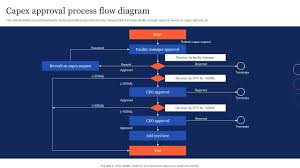Modern Customer Feedback Strategies: Using Surveys, Social Media, and Real-Time Insights

Businesses often talk about listening to customers, but how often do they actually do it in a meaningful way? Modern customer feedback strategies have evolved far beyond the old suggestion box or an occasional email. Today, feedback comes through structured surveys, buzzing social media channels, and real-time insights that reveal what customers are thinking right now. When used properly, these strategies do more than collect opinions. They shape smarter decisions, improve products, and deepen trust. And when you combine them with the power of customer feedback in Zendesk, you unlock a system that actually makes feedback actionable. Many companies enhance this process further with tools like the GrowthDot NPS and Survey, which bring quick, practical ways to measure customer happiness without overwhelming teams.
Zendesk has positioned itself as the best customer support platform not only because of its ticketing system but also because of its ability to integrate feedback seamlessly. With the right strategies in place, companies can move from guessing what customers want to knowing it with confidence.
The Power of Surveys in a Fast-Moving World
Surveys remain one of the most effective ways to gather structured customer feedback. The key is designing them in a way that respects customers’ time while still delivering meaningful insights. Short, focused surveys often perform better than long questionnaires that feel like a chore.
A great example comes from a small SaaS business that used customer feedback in Zendesk by sending a simple two-question survey after every resolved ticket. One question asked about satisfaction with the response, and the other asked for suggestions. The completion rate jumped above 70 percent because customers didn’t feel burdened. That small adjustment gave the company a steady stream of actionable insights without overwhelming customers.
Social Media as a Feedback Goldmine
In today’s world, customers don’t just send feedback directly. They post it on Twitter, Instagram, Facebook, and even TikTok. Ignoring these conversations is like ignoring someone shouting your name across a crowded room. Social media is messy, unfiltered, and sometimes awkward, but that’s exactly what makes it valuable.
One retail brand tracked customer feedback on Instagram comments. Instead of brushing them off as casual chatter, they logged issues into Zendesk and responded through their support team. When customers saw that the company actually noticed and replied, loyalty increased. Social media became more than a marketing tool. It turned into a living, breathing feedback loop that influenced product decisions.
Real-Time Insights That Drive Action
Surveys and social media are powerful, but sometimes you need to know what customers think right now. Real-time insights give businesses that immediate pulse. Zendesk provides dashboards that show live metrics like ticket volumes, average response times, and customer satisfaction scores. With GrowthDot NPS and Survey layered on top, businesses can even capture sentiment instantly during interactions.
Imagine a travel company handling thousands of calls during holiday season. Using real-time insights from Zendesk, they noticed spikes in negative feedback linked to one specific destination. Instead of waiting weeks for survey results, they immediately investigated and discovered delays with a local partner. Quick action reduced complaints, and customers appreciated the transparency. Without real-time data, the problem would have dragged on unnoticed.
Combining Feedback Channels for a Complete Picture
No single feedback channel tells the whole story. Surveys show structured data, social media provides unfiltered opinions, and real-time insights reveal urgent issues. The real magic happens when you combine them.
For example, a health tech company used surveys to track general satisfaction, social media monitoring to catch unexpected complaints, and real-time insights from Zendesk to manage urgent service delays. By putting all three together, they created a 360-degree view of customer sentiment. Instead of reacting randomly, they prioritized issues with the most impact. This strategy not only improved support metrics but also guided product improvements that customers had been asking for all along.
Why Customer Feedback in Zendesk Stands Out
Many platforms claim to help with customer feedback, but customer feedback in Zendesk stands out because it connects directly to the conversations your team is already having. Instead of storing survey results in a separate system, Zendesk ties feedback directly to tickets, agents, and workflows. This makes insights actionable rather than just numbers in a spreadsheet.
Companies using Zendesk also benefit from its integrations. Pairing it with GrowthDot NPS and Survey gives teams the ability to launch quick Net Promoter Score checks or customer satisfaction surveys without extra tools or confusion. Real-life stories show this clearly. A logistics company integrated GrowthDot NPS surveys into Zendesk workflows and discovered that response rates nearly doubled because the feedback request arrived at the right moment. They turned that data into better training for agents and saw immediate improvements in customer ratings.
The Awkward Truth About Ignoring Feedback
It’s easy to say, “We’ll collect feedback later,” but the reality is that later often never comes. Companies that delay listening to customers usually pay the price in churn and negative reviews. Ignoring feedback doesn’t just lose sales. It creates a reputation that customers don’t forget.
One awkward case involved a subscription service that kept getting complaints about confusing cancellation policies. They didn’t monitor feedback closely, so the complaints built up on social media. By the time they noticed, angry posts had gone viral. If they had been using Zendesk with real-time insights and surveys, they could have corrected the policy earlier and avoided public backlash. That’s the cost of silence.
Moving From Feedback to Action
Collecting feedback is only the first step. Acting on it is what truly matters. Zendesk makes this process easier because feedback is connected directly to tickets. Teams can tag issues, assign them to the right department, and create reports that highlight recurring themes. Action becomes part of the workflow, not a side project.
A real-life example comes from a software company that noticed through Zendesk feedback that customers struggled with one onboarding step. Instead of treating it as a one-off issue, they flagged it as a recurring theme. Their product team simplified the step, and within a month, complaints dropped dramatically. Feedback turned into tangible product improvement that customers appreciated.
Final Thoughts: The Future of Customer Feedback
Modern customer feedback strategies are no longer optional. They are the foundation of building customer trust and staying competitive. By using surveys, tapping into social media, and leveraging real-time insights, companies can create a dynamic loop of listening and acting.
The most effective way to make this work is through customer feedback in Zendesk, especially when enhanced by tools like GrowthDot NPS and Survey. Together, they give businesses the structure, flexibility, and immediacy needed to turn feedback into action. The lesson is clear. Customers are already talking. The only question is whether your business is truly listening.


